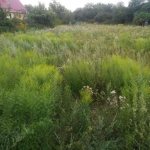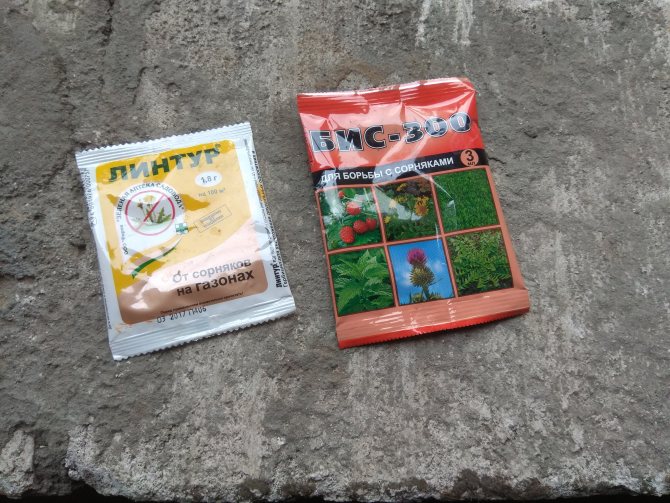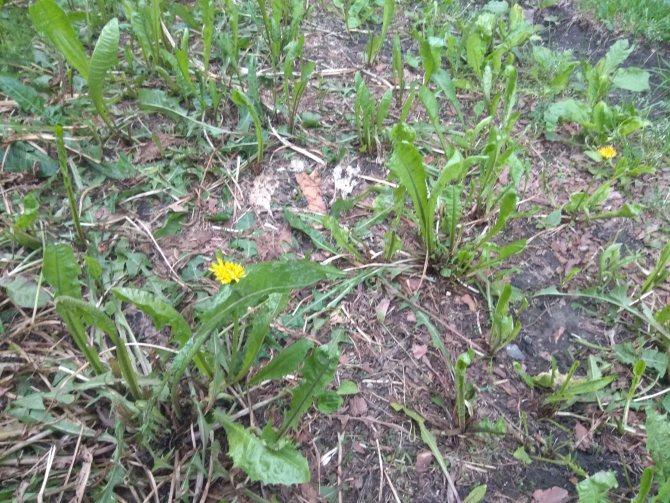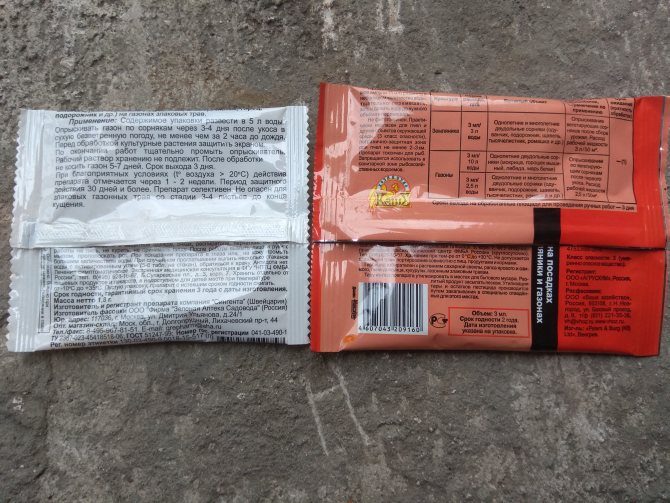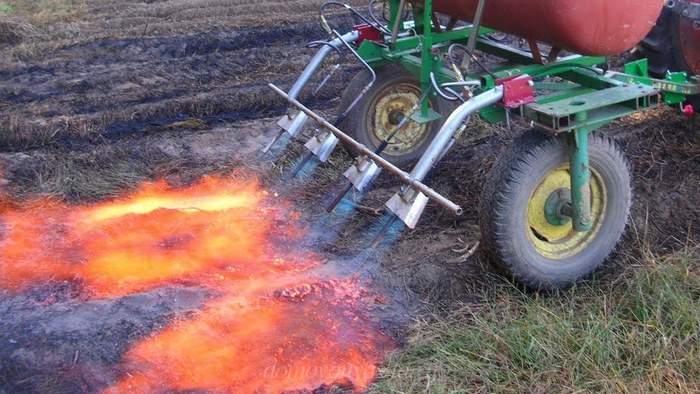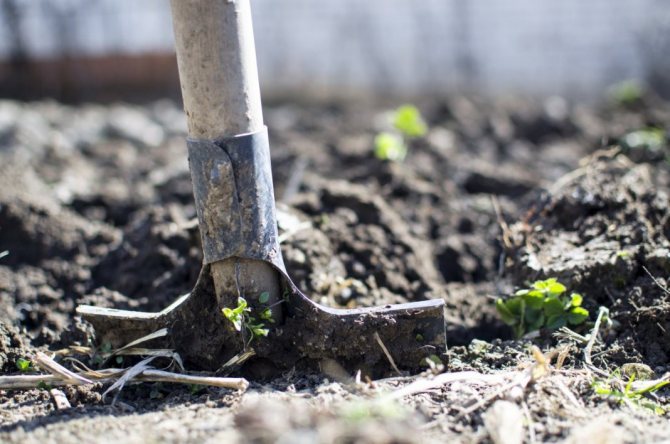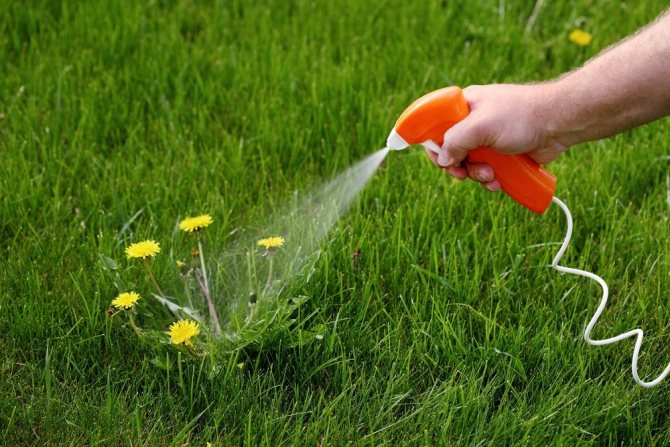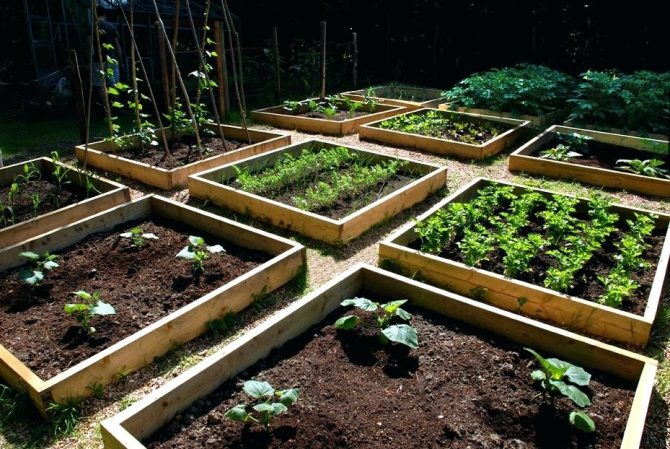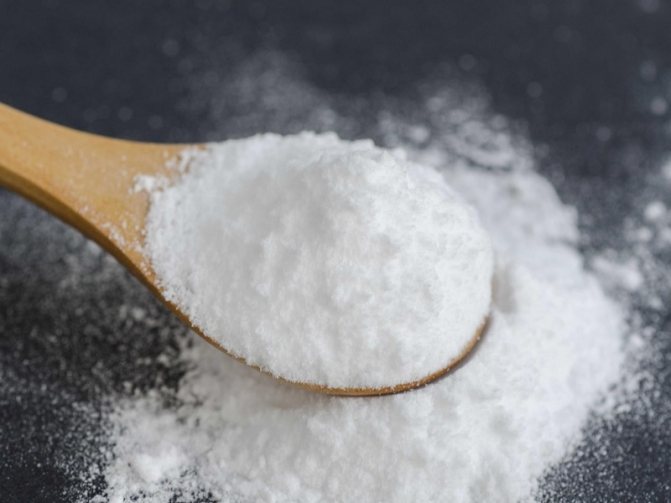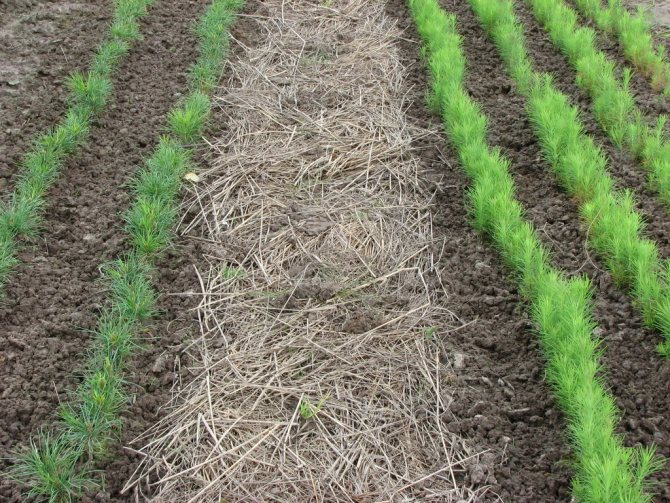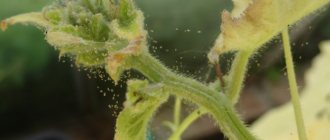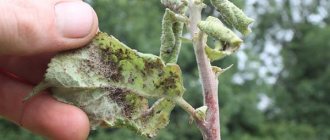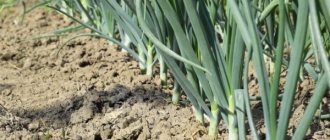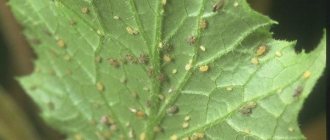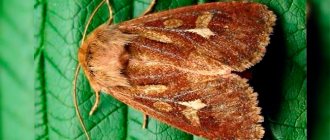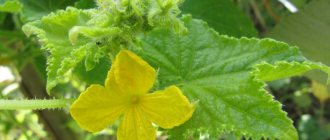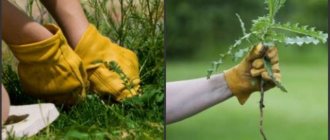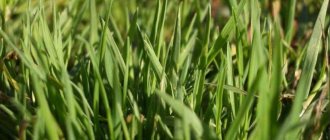Weed grass grows on its own, and in huge quantities, without any care and attention. This is its fundamental difference from cultivated plants. At the same time, weeds shade cultural plantings, suck precious moisture and nutrients from the soil, threatening to ruin the future harvest at the root.
Gardeners, gardeners and summer residents spend a lot of time saving their plots and gardens from this scourge. The fight is conducted with varying success, but invariably the weed returns to the cultivated beds, and the battle flares up with renewed vigor.
How to get rid of the grass on the site forever or what can be used to water the grass so that it never grows in the garden again - sooner or later every owner of a personal plot or summer cottage begins to ask these questions.
Grass on the site
How to destroy the grass forever or who will help the gardener - this article is intended to answer these questions.
Get rid of grass and weeds in the garden once and for all
Getting rid of weeds and grass is an essential dream for most gardeners. Indeed, almost immediately after planting seeds and seedlings, a difficult period of battle with weeds begins, which often grow faster and better than any crop planted on the site.
Summer is a fleeting and wonderful time, and no one naturally wants to spend time in the garden, pulling out and weeding grass, so effective methods and tools have been invented that make life much easier. So what are these methods and how to apply them?
Today, there are two popular methods to combat harmful vegetation:
- mechanical,
- chemical.
The first method involves manually pulling out the weed along with the rhizome. However, there is no guarantee that the grass will not climb up again with renewed vigor. When treating the site, use garden tools to uproot the grass and not leave it in the soil.
The chemical method involves the use of herbicides, with their help it is possible to carry out a total cleaning of the soil from grass and weeds. This is an effective method, but not very cheap.
The weed has a high vitality and fertility, grows everywhere - in the garden, in the field, in the garden in the beds. Can be carried by water, wind, shoe soles. Low temperature does not harm their seeds, and germination is maintained both after 3 and after 70 years.
They take up moisture, nutrients, light from cultivated plants, and are also often carriers of various diseases and pests.
There is a great variety of weed varieties, and each type harms the cultivated plants in the garden.
Mulching with green manure
Siderata do not have to be plowed into the soil. Spread out in a small layer on the beds, they are suitable as mulch. Mulching the soil with green manure has many advantages:
- promotes long-term preservation of moisture in the soil and relieves its premature drying out;
- suppresses the natural development of weeds;

- enriches the soil with minerals;
- creates favorable conditions for the reproduction of earthworms.
Loach in the garden, and how to get rid of loach forever?
Loach (popularly birch) is a climbing perennial. The plant looks very cute and harmless, but it is very difficult to fight it.To get rid of the loach forever, systematic work will help, to fight it for a long time and is still quite difficult. The root system of the loach is branched and can go deep into the ground up to 6 meters. The stem is highly branched and spreads along the ground, its length can reach up to 3 meters. The flowers are in the form of a gramophone tube of a pale white or slightly pinkish color. The birch tree produces many seeds that germinate with ease from a depth of 20 cm.
An effective method of dealing with a birch tree is a chemical one. Plants should be treated with herbicides during the flowering period, at this stage nutrients are actively supplied to the root system. The tool must be applied to each bush separately, but resort to the chemical method should be after the entire crop has been harvested.
How to remove a birch tree in an empty area:
- dig up the soil and pick roots;
- sow the dug up piece of land with mustard;
- liming of the soil in the autumn;
- soil mulching. In the spring, cover the overgrown area with a dark material - cardboard, roofing felt or even an ordinary film. There is a strong heating of the soil and from the lack of sunlight the weed is unable to germinate and dies.
If the bindweed is already growing next to perennial crops, then the methods listed above are not suitable, and you must proceed as follows:
- constantly weeding, if the aerial part of the plant is systematically removed, then the plant is depleted and dies;
- spot use of herbicides, apply the drug to the leaves of the weed with a sponge or brush;
- soil mulching.
Chemical treatment
The use of special chemicals has become the basis for the destruction of weeds in the garden or lawn. Weed killers, called herbicides, gained popularity in the middle of the last century, after they began to add ingredients that had more powerful capabilities. Due to this, herbicides have a variety of effects and effects on plants, in particular:
- the number of ways of penetration of drugs into plants has increased;
- there was an opportunity to choose a widespread or selective impact;
- the preparations began to have a significant effect on the life processes of agricultural crops.
By the nature of the action, all herbicides are divided into contact and systemic ones. The first category includes drugs that are effective only in the place of direct contact with the treated area. In this regard, systemic herbicides are more effective, since when the drug gets on some separate part of the weed plant, it quickly spreads throughout its aerial part and penetrates the root system, which soon leads to the death of the weed. Such preparations are also more profitable in economic terms, since they can reduce the consumption of working fluid and quickly clear the land of weeds.
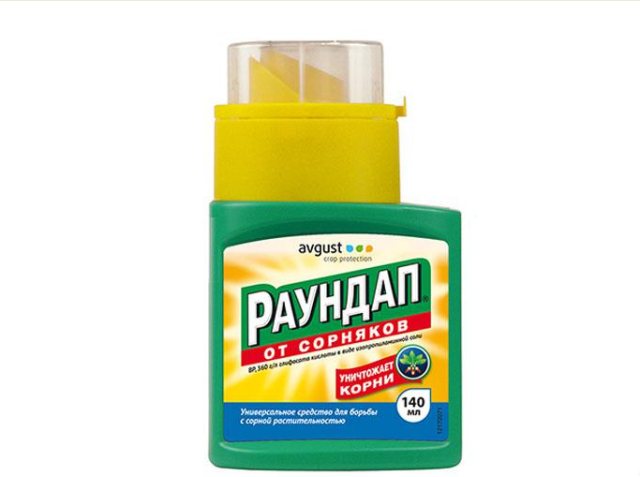

Systemic herbicides
Depending on the spectrum of action, the drugs in question are divided into two categories:
- solid;
- selective.
The first group of drugs includes herbicides that completely destroy all vegetation within the radius of its action, including cultivated ones. Such funds are usually used in cases where it is necessary to obtain a site that would be absolutely completely free of any plants. For example, continuous herbicides are widely used in construction to clear areas. Other areas of application of these drugs:
- lining of roads, highways, highways;
- bookmarking of reservoirs;
- placement of paving slabs on the site;
- preparation of a site for planting lawn grass.
The main drugs in this category include:
- Tornado;
- Glyphosate;
- Antiburian, etc.


Tornado
Any agent against the growth of grass of selective action is characterized by the ability to destroy only weeds, without causing any harm to cultural plantings. Depending on the varieties of weeds, their number and species, a specific preparation and its concentration are selected on an individual basis. Such means are most common in agricultural production, as well as for some other purposes, for example, in maintaining a lawn in a well-groomed and leveled condition. The preparations are used to destroy the most common weeds, in particular:
- wheatgrass;
- hogweed;
- dandelion;
- horsetail;
- plantain;
- all varieties of weeds.
The drugs in question are available in various forms, in particular:
- emulsions;
- suspensions;
- granules;
- thinners;
- powders.
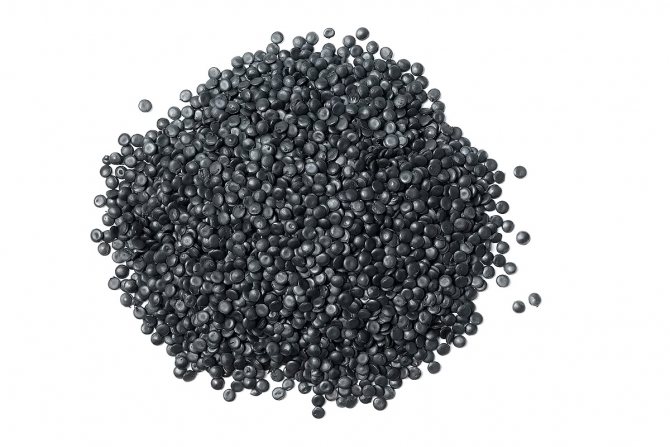

Granules
Selective herbicides are characterized by a particular variety of effects on plants, which can be, among other things, complex. This includes the following mechanisms:
- destruction of cell membranes;
- violation of photosynthetic processes;
- negative impact on fat synthesis;
- inhibition of the formation of amino acids, etc.
What other grass remedies are available to keep the grass from growing?
Another effective way to combat grass is ammonium nitrate. It turns out that ammonium nitrate is used not only as a fertilizer, but also as a weed control agent. Concentration naturally will have to make "slaughter", in a bucket of water, dilute 3 kg of saltpeter and start processing the site.
This is a completely safe method for humans, because saltpeter quickly erodes into the atmosphere in the form of ammonia, and a little liquid is needed, just moisten the leaves.
Siderata. So that the grass does not grow in the garden or vegetable garden, rye is also sown. The plot is sown with rye after harvesting. This green manure not only removes grass and weeds from the soil, but also fertilizes and disinfects it. In the spring, it is embedded in the soil with a walk-behind tractor or a shovel.
In addition to rye, mustard, lupine, peas, oil radish are sown on the site, they grow rapidly, and oppress the weed.
Corn flour. Corn flour contains a lot of gluten, and it inhibits the germination of various seeds. You can sprinkle flour over the area where your crops have already sprouted. And the weed will not germinate for a long time.
Boiling water. Pour a kettle of hot water over the top of the weed, being careful not to hit the good plants. The procedure must be repeated 2-3 times over several days, since this method does not always work the first time.
Also try pouring out the water in which the eggs were boiled (boiling water only). This will enhance the effect.
Acetic spray. You need 2 tbsp. white vinegar, 3 tbsp. tablespoons of concentrated lemon juice, 30 ml of alcohol, 2 tsp of detergent. Dilute 50% -90% with water. And spray through a sprayer, carefully not getting on cultivated plants.
Weed control methods
The choice of existing control methods depends on the specific situation, place and intensity of weed development. If the site has already been cultivated and largely cleared of plant "debris", then you can limit yourself to safe, environmentally friendly methods: mechanical and agrotechnical.
Mechanical
Mechanical methods belong to the category of simple and economical, but laborious and time-consuming manual (or using tools) work, which consists primarily in constant weeding. At the same time, it is important to remove weeds from the root and as often as possible, preventing flowering and seed ripening.
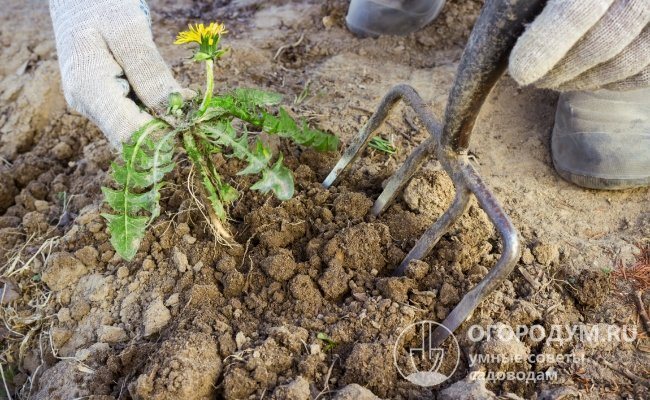

To pull out the powerful dandelion root, especially from dry ground, you need to dig it up with a pitchfork or a shovel.
To slow down the growth of weeds, they also use attrition method... It consists in pulling out, mowing or pruning (for example, with a flat cutter) the vegetative part of the plants, which gradually weakens the root system and leads to its death.
In areas heavily littered with wild herbs, it is recommended to carry out deep plowing or digging land in the fall (in regions with little snow, severe winters) or in summer (in the southern regions), so that the roots of plants, extracted to the surface of the soil, accordingly freeze or dry out under the hot sun. Digging up small areas, regardless of the region and season, it is advisable to pick the roots of weeds by hand or with a rake, and then burn them or send them to compost. It is better to dig up with a pitchfork, not a shovel, so that, without cutting the root system, pry and pull out deep rod or long branched rhizomes, for example, wheatgrass or loach, which actively sprout again even from small pieces left in the ground.
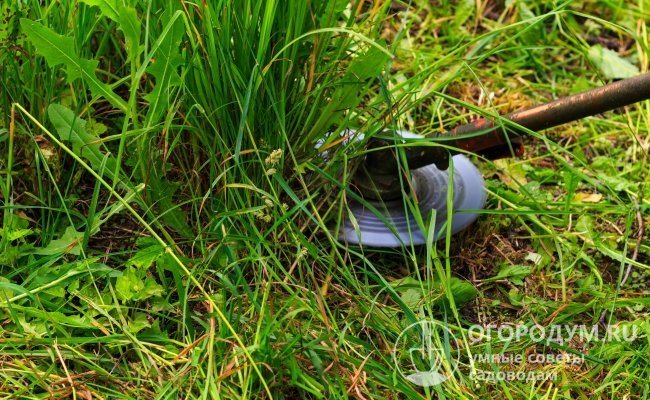

Constant mowing, pulling out or pruning of the aerial part of the plant weakens the root system and eventually leads to its death.
To cultivate virgin soil, completely covered with weeds, the method is also used for mechanical cleaning spring "rolling" of the turf... This is done as follows: in early spring, as soon as the snow melts, the sod is pry up with a shovel or shovel and rolled into rolls like rugs. At this moment, the sod is well separated from the water-saturated soil, and even large perennial weeds are pulled out freely. In this way, fairly large areas can be cleaned daily without significant effort. The grass-free areas are covered to keep them clean until a suitable time for planting. The rolls of turf are stacked in piles on which it is convenient to grow squash or pumpkin during the next season.
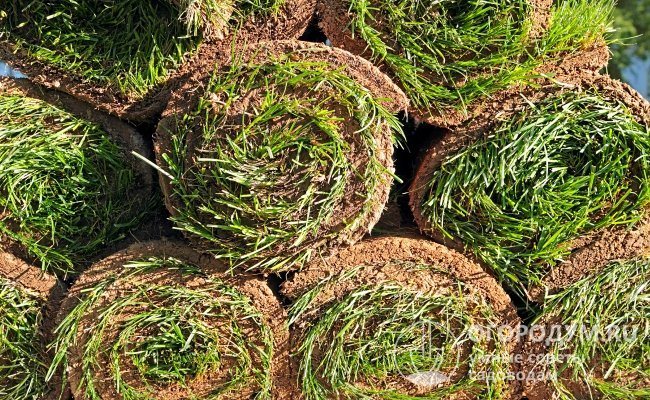

You can remove weeds on a virgin land plot in early spring by rolling the sod from the surface of the earth into rolls
Advantages of the method: rather low cost of time and labor, preservation of the soil ecosystem.
There is only one drawback: the soil is in the optimal condition for "rolling" the turf for only a few days, and not every summer resident has the opportunity to get to the site at this very moment.
Agrotechnical
Some of the most effective agrotechnical measures to help get rid of weeds in the country include:
- sowing green manure;
- organization of drip irrigation systems for horticultural crops;
- mulching the soil.
Proponents of organic farming actively use the method sowing green manure, since it helps not only to restrain the growth of weeds, but also has a beneficial effect on the structure and composition of the soil, making it looser and enriching it with micro and macro elements, in particular nitrogen. Siderata are annual fast-growing crops, mainly cereals and legumes (rye, oats, buckwheat, rapeseed, mustard, clover, alfalfa, vetch, etc.), which are densely sown in autumn after harvest or in early spring. When sowing in spring, the seedlings are allowed to rise by 20-30 cm, mowed and left for a short time to pep on the ground. Then they are used either to form a mulch layer, or plowed into the soil along with the roots.


Siderata sow so densely that their root system inhibits the growth of weeds.
Important factors when choosing green manure are considered to be their cold resistance and relatedness to crops that are planned for subsequent planting in this place.
It is not recommended to plant closely related plants, such as cabbage, radish, radish, rutabaga, turnip after mustard or oil radish belonging to the same cruciferous family.
The use of green manure does not require special financial and labor costs, it helps to drown out the growth of weeds not only in individual beds, but also in large areas, for example, in a potato field or on the territory behind a fence.
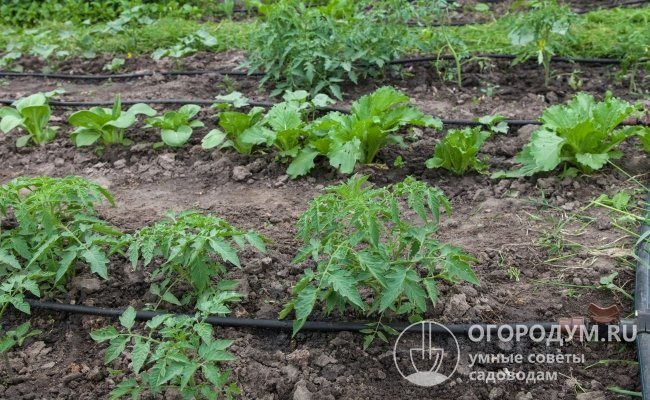

Drip irrigation systems allow you to provide comfortable conditions only for the necessary plants planted in the beds
For mulching (usually under trees and shrubs) use dark non-woven materials (agrofibre) or improvised means (such as unnecessary pieces of linoleum) to block the access of sunlight and prevent the growth of weeds. Some gardeners recommend closing entire beds for the entire season so that the roots in the ground are overrun and die, but this method significantly reduces the usable area, which directly affects the potential yield. Moreover, the result will be highly questionable and, in any case, temporary. Weed seeds can maintain their germination in the soil for several years, after removing the shelter, they germinate safely, new ones are easily brought into the "cleaned" area by the wind, birds and animals, and the roots of weeds that reproduce vegetatively quickly penetrate from the surrounding area, reducing the resulting effect to zero.


Agrofibre is a special fabric or film that has a multifunctional purpose
If in the agrofibre, which covers the beds, you make cuts and plant, for example, strawberry seedlings, then the mulching layer will not only prevent the germination of unwanted weeds, but also, thanks to the black color, quickly warm up and increase the temperature of the soil, which will accelerate the overheating of the roots of weeds and stimulate the development cultivated plants.
Chemical
Chemical preparations in amateur gardens should be used with great care, applying them literally pointwise, with a brush, on particularly vicious single specimens of weeds. On virgin lands, herbicides can be sprayed, but only in sunny and calm weather, so as not to harm the nearby cultural plantings.
For these purposes, various means are used (Roundup, Hurricane, etc.), the active ingredients of which, mainly glyphosate (isopropylamine salt), completely destroy the root, penetrating into it through the green aboveground part of plants - leaves and stems.
The list of herbicides officially approved for use in Russia is given in the State Catalog of Pesticides and Agrochemicals.
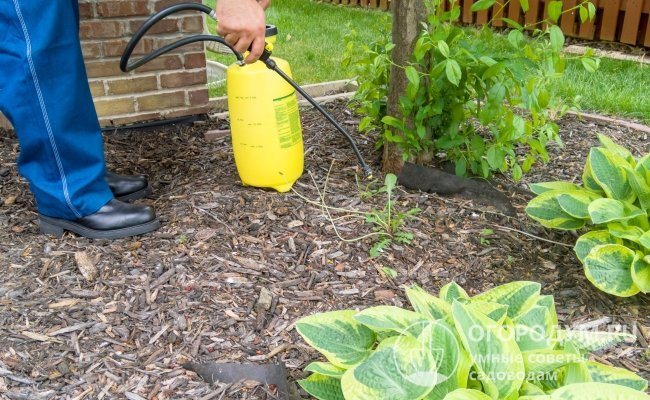

Chemical means of weed control in the vegetable garden, garden, flower bed or lawn must be applied very carefully and carefully.
When treating the site with chemicals, you must strictly follow the instructions for their use, follow the recommended dosages and safety rules. Toxic substances contained in herbicides can remain in the soil, leading to the death of a number of growing crops, as well as insects, including pollinators.
People's
Recipes for folk remedies are based on the use of aggressive concentrated solutions prepared from homemade improvised reagents: table salt, baking soda, or acetic acid... All of them are unlikely to help remove the grass on the site, but rather lead to negative consequences in the form of a violation of the composition of the soil: salinization, alkalization or acidification. Experiments with such means can only be allowed where plants are not needed at all, for example, on lined garden paths, on the surface of patio yards, in the basement area of buildings or in a cemetery. Although in these places it is better to weed out the weeds by hand or point-to-treat with chemistry.
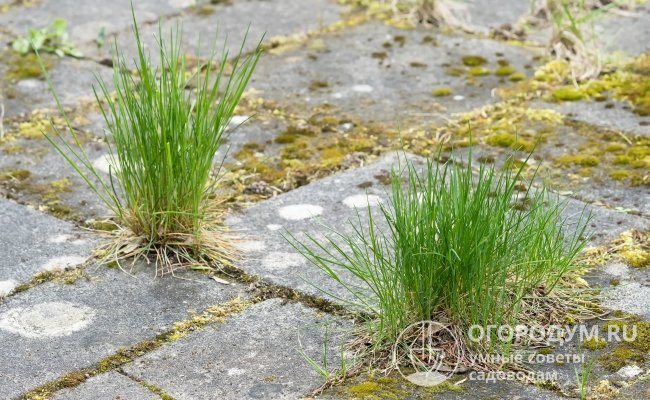

Grass sprouting on paths or in the yard must be regularly weeded out by hand or destroyed with herbicides
Some gardeners offer to cultivate the land around the planted fruit and vegetable crops with an alcohol solution, but such "disinfection" will impress neighbors more than annoying weeds.
This is not to say that any of the listed methods of struggle is good and effective in itself and it is enough to apply it once. In fact, it is necessary to get rid of weeds in a systematic and comprehensive manner, combining all methods and means, taking into account the specifics of cultivated crops, soil type, characteristics of individual weeds, weather and climatic conditions and other individual factors.
Folk method from grass on site using salt and vinegar
Salt and vinegar kill all plants that come into contact with them. Therefore, this mixture should be used with caution. It also kills nutrients in the soil, so use a solution where there are no cultural plantings nearby.
Salt and vinegar solution recipe: 3.8 L of vinegar and 0.5 tbsp. salt, a few drops of any detergent (so that the drops of the mixture adhere to the weeds), mix everything thoroughly.
This mixture works best on a sunny, hot day when rain is not expected in the coming days. Spray the weeds in the morning, and by the evening you will be pleased with the result.
Vinegar must be taken 15% -20%, if the percentage is less, then re-processing will be required.
What lawn grass displaces weeds
There are several types of lawn grass that can effectively kill weeds. Most of them belong to the Zlakov family. Nowadays, it is popular for weed-displacing lawns of certain crops.
Pole grass shoots
Pole grass is a fairly common lawn grass that is good at destroying weeds. Another name for the plant is white bent.
This cereal is common in the temperate climate of Eurasia. The plant prefers moist soils, does not tolerate areas without a sufficient amount of water.
The bent grass is a typical representative of its family and has an extended root system with elongated shoots. It is able to form numerous erect shoots up to 90 cm high, rooting at the nodes.
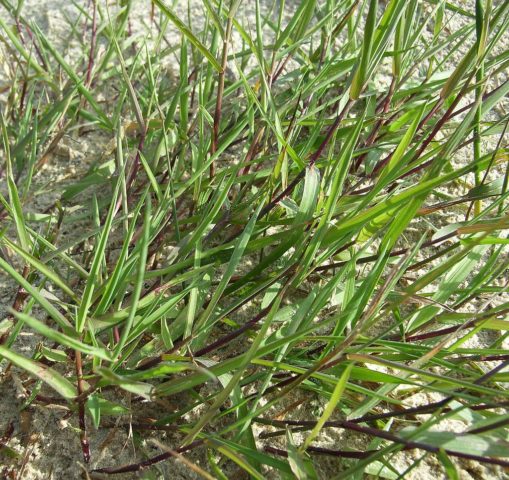

Leaves of bent grass 3-10 cm long, 1.5-4 mm wide, elongated and pointed at the tips, rough along the edges. The vaginas are purple at the beginning and end of the season.
Red fescue
This herb is found throughout Europe, in temperate climates it is common in the United States, Canada and Asia. Grows in meadows or sunny areas; suitable for dry soils. It tolerates drought well and soils with a low humus content.
Fescue is a perennial with stems up to 70 cm high and creeping rhizome. If conditions permit, instead of a thick central core, the grass forms dense turf, inhibiting the emergence and development of vegetation, thereby displacing any weeds.
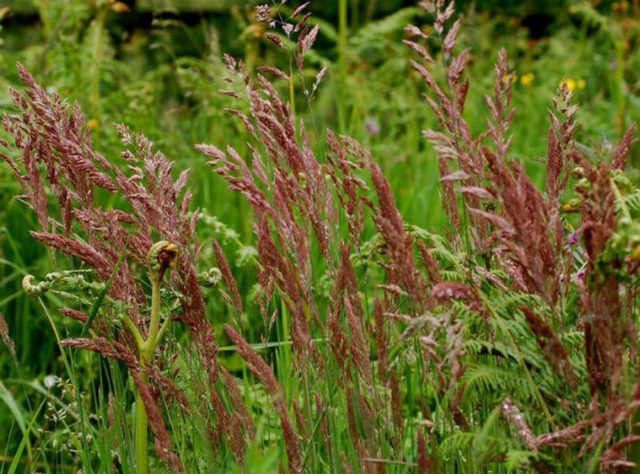

Leaves up to 20 cm long, 1-3 mm wide, extremely dense in the root zone. Color - light green or bluish green. The name "red" fescue was given by the color of rather large and very well visible inflorescences.
Meadow bluegrass
A perennial cereal common in temperate climates throughout the world. One of the earliest cereals, tolerates cold climates well. One of the few plants living in Antarctica, although the local population covers an area of no more than 1 sq. m.
The stem height can reach 90 cm, after mowing it grows again in the same season, but the height does not exceed 30 cm. Leaves up to 25 cm long, up to 4 mm wide. The root system consists of several nodes connected to each other by creeping shoots. Despite the rather close arrangement of the nodes, the sod is not too thick, and its layer is not very thick.


Bluegrass can grow on any soil (up to sandy). It develops best on moderately fertile and slightly moist soils.Highly resistant to weathering.
Ryegrass
The English name hides an ordinary chaff. This perennial cereal plant is not used on its own to fill lawns, but is used exclusively in conjunction with some other perennial.
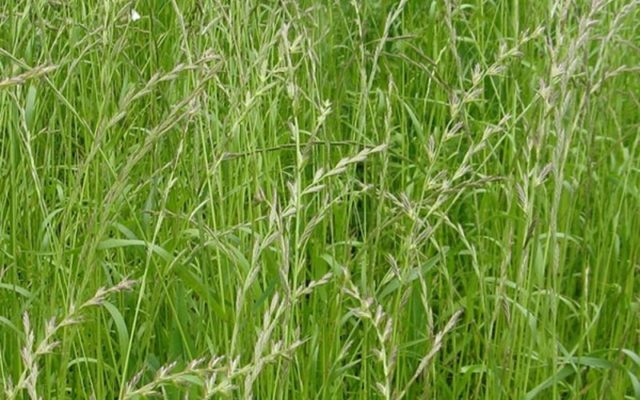

Distributed almost everywhere. A feature of the plant is its weak vulnerability to mechanical damage. The chaff is not afraid of trampling. Has a high growth rate and needs regular haircuts.
It has a fibrous root system and a stem up to 60 cm long. The leaves are similar to those of wheat - long and thin (up to 30 cm long, up to 10 mm wide). Green colour.
Microclover
Microclover is the result of long-term selection of creeping clover. It is a low-growing perennial plant of the legume family. Clover is one of the best weed-killing lawn grasses. Its root system is pivotal, with a large number of branches. One of the features of the plant is its green coloration, which persists throughout the year.
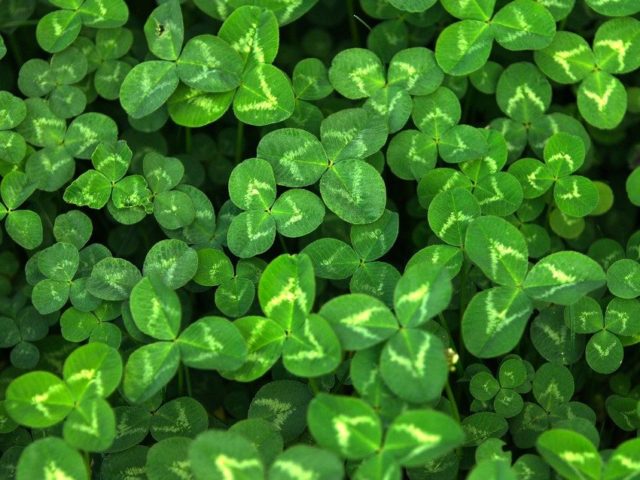

The height of the stems rarely exceeds 10 cm. The leaves have a three-lobed shape, standard for a clover, they are located on relatively short petioles. The color is deep green, about a third of the leaves have white V-shaped marks.
The plant is immune to drought and heat, and can be cultivated on any soil. Virtually maintenance-free.
Important! All of these plants actively deplete the soil, and their stems and leaves are rich in nutrients. On the one hand, this requires regular feeding of the lawn soil, on the other hand, it makes it possible to use the cut grass as nutritious mulch or feed for livestock.
How to get rid of the grass between the paving slabs?


The grass that has sprouted between the paving slabs spoils not only the quality of the area, but also the aesthetic appearance. So how do you get rid of it?
Salt. You can dissolve ½ tbsp. salt in hot water, pour into a spray bottle and process the seams of the paving slabs. Any salt will do.
You can use dry salt, for this you need to pre-wet the weed with water, then sprinkle with salt and wet again.
You can also sprinkle a pinch of salt at the base of the weed, this will kill the weed.
Soda. To get rid of small grass, it will be enough to pour a baking soda solution over them. 5 liters. water 2 tbsp. tablespoons of soda and 1. tbsp. spoon of soap. The procedure is repeated several times, maintaining a weekly interval.
Salt and vinegar. This method is also suitable for seams of paving slabs that are overgrown with grass. The composition of the mixture: 1 liter of vinegar, 150 gr. Salt, 1 syringe of liquid soap. Pour salt into a bottle, pour vinegar and add soap. Shake the solution well and pour over the tile joints.
Here are some simple ways to control weeds.
All of the above methods are very effective in combating grass and weeds, they make it possible to maintain the garden plot in perfect condition, which will significantly increase the yield or simply delight you with a beautiful and weed-free lawn.
Write below in the comments about your methods, and if you found the article useful, also join the discussion ... Your opinion is very important. Thanks in advance!
Author of the publication
offline 3 years
Can lawn grass kill weeds?
There are several types of grass, the roots of which form powerful turf. Almost no other plant can break through them. However, it is not enough just to plant grass with a branched root system on the lawn. To prevent weeds from growing, certain conditions must be created:
- It may take more than a year to form a root system that displaces weeds.This means that from the moment of planting until the formation of a continuous network of roots, you will have to deal with the destruction of weeds, which are fortunate enough to emerge on an as-yet-formed lawn.
- Even a mature lawn that displaces weeds is not ideal - individual bushes of grass in it may die off or develop unevenly. That is, weeds will appear on it from time to time, forcing the gardener to spend time destroying them. In addition, you will have to fill in the fragments of the lawn, planting new grass or transferring it from other areas.
To maintain competitiveness with other plants (maintain stable growth and normal state), the grass displacing weeds requires a set of measures:
- at the very beginning, the lawn requires pre-sowing preparation, including digging up the soil and the destruction of all plants located on the territory of the future lawn;
- periodic application of top dressing for the lawn (nitrogen at the beginning of spring, phosphorus-potassium at the end of autumn);
- regular mowing, for lawn grass it will stimulate growth, for most weeds - a depressing factor leading to their death.
How to deal with weeds in a cemetery: general tips
Since many people do not have the opportunity to come to the cemetery often, they should use special weed control chemicals. If people do not want to spray harmful substances over the grave of a loved one, they can use other methods of processing the cemetery hill. Some people prefer to decorate the grave site with tiles, but this cardinal solution is not suitable for many. Such works are expensive, and in the case of a related burial, the tiles will have to be lifted. But the tile design, together with the monument and the neat fence, looks stylish and beautiful, so many people stop at this option.
What is the source of weeds?
If cultivated plants appear in a garden or vegetable garden thanks to a person, then weeds arise on their own. They breed throughout the season and thrive in almost any conditions. These harmful plants can appear in you in different ways:
- From the soil. The fact is that in any case spores of many weeds are present in it, which for the time being are in a dormant state. But, as soon as the external conditions undergo some changes (for example, the rain has passed), they immediately break through the soil and make themselves felt.
- Through organic fertilizers, which hardly anyone can do without when growing vegetables and fruits.
- Through poor quality planting material. Therefore, purchase it only from time-tested sellers and specialized outlets.
- The wind is an excellent carrier of seeds for enemies of cultivated plants. One gust is enough to turn an ideal plot into an ideal weed shelter.



